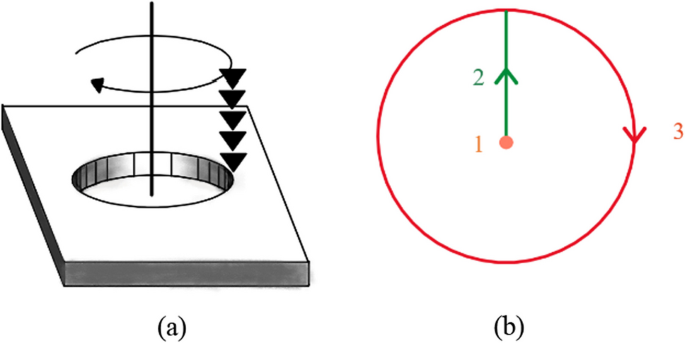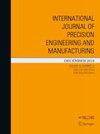Real-Time Defect Monitoring of Laser Micro-drilling Using Reflective Light and Machine Learning Models
IF 2.6
4区 工程技术
Q2 ENGINEERING, MANUFACTURING
International Journal of Precision Engineering and Manufacturing
Pub Date : 2023-10-24
DOI:10.1007/s12541-023-00849-w
引用次数: 0
Abstract
Abstract Laser micro-drilling is a significant manufacturing method used to drill precise microscopic holes into metals. Quality inspection of micro-holes is costly and redrilling defective holes can lead to imperfection owing to the misalignment in re-aligning the removed specimens. Thus this paper proposes an in-situ, automatic inspection method using photodiode data and machine learning models to detect defects in real-time during the fabrication of SK5 steel plates with 1064 nm Nd:YAG Laser machines to reduce the workload and increase the quality of products. Further, it explores the possibility of generalizing the models to 51 different scenarios of fabrication by classifying unseen data into 51 classes. A dataset of around 1,500,000 time series data points was generated using an optical probe while drilling over 56,000 holes into test specimens. 15 different combinations of thickness and diameter were drilled using suggested parameters. An additional 12 potential defect-prone conditions were designed to obtain data during conditional drilling. Hole quality was measured for each hole using OGP 3D profile microscope measuring machine. Results showed high accuracy in specialized defect detection within each scenario and showed a possibility of classifying photodiode data patterns, offering opportunities to improve the practicality of the proposed solution.

基于反射光和机器学习模型的激光微孔缺陷实时监测
激光微孔是一种重要的制造方法,用于在金属上钻出精密的微孔。微孔的质量检测是昂贵的,并且由于重新对准被移除的样品时的不对准,重新钻孔缺陷孔可能导致不完美。为此,本文提出了一种利用光电二极管数据和机器学习模型对1064 nm Nd:YAG激光加工SK5钢板过程中的缺陷进行实时检测的原位自动检测方法,以减少工作量,提高产品质量。此外,它探讨了通过将未见数据分类为51类,将模型推广到51种不同制造场景的可能性。使用光学探针在测试样本上钻了56,000多个孔,生成了大约150万个时间序列数据点的数据集。根据建议的参数,钻取了15种不同的厚度和直径组合。另外还设计了12个潜在缺陷易发工况,以便在条件钻井期间获取数据。采用OGP三维轮廓显微镜测量机对每个孔进行孔质量测量。结果表明,在每种情况下,专业缺陷检测的准确性很高,并且显示了对光电二极管数据模式进行分类的可能性,为提高所提出解决方案的实用性提供了机会。
本文章由计算机程序翻译,如有差异,请以英文原文为准。
求助全文
约1分钟内获得全文
求助全文
来源期刊

International Journal of Precision Engineering and Manufacturing
ENGINEERING, MANUFACTURING-ENGINEERING, MECHANICAL
CiteScore
4.00
自引率
10.50%
发文量
115
审稿时长
5.4 months
期刊介绍:
The International Journal of Precision Engineering and Manufacturing accepts original contributions on all aspects of precision engineering and manufacturing. The journal specific focus areas include, but are not limited to:
- Precision Machining Processes
- Manufacturing Systems
- Robotics and Automation
- Machine Tools
- Design and Materials
- Biomechanical Engineering
- Nano/Micro Technology
- Rapid Prototyping and Manufacturing
- Measurements and Control
Surveys and reviews will also be planned in consultation with the Editorial Board.
 求助内容:
求助内容: 应助结果提醒方式:
应助结果提醒方式:


